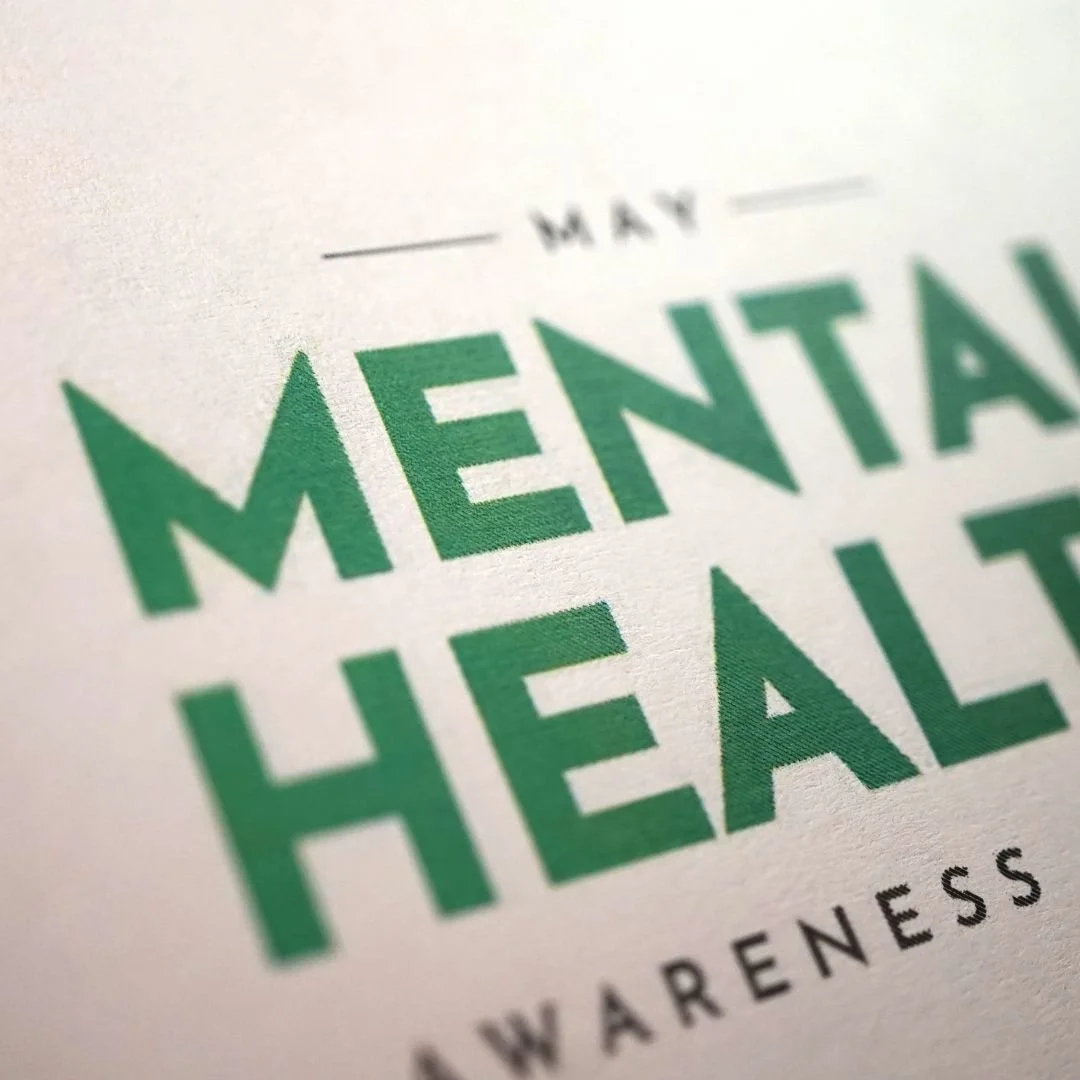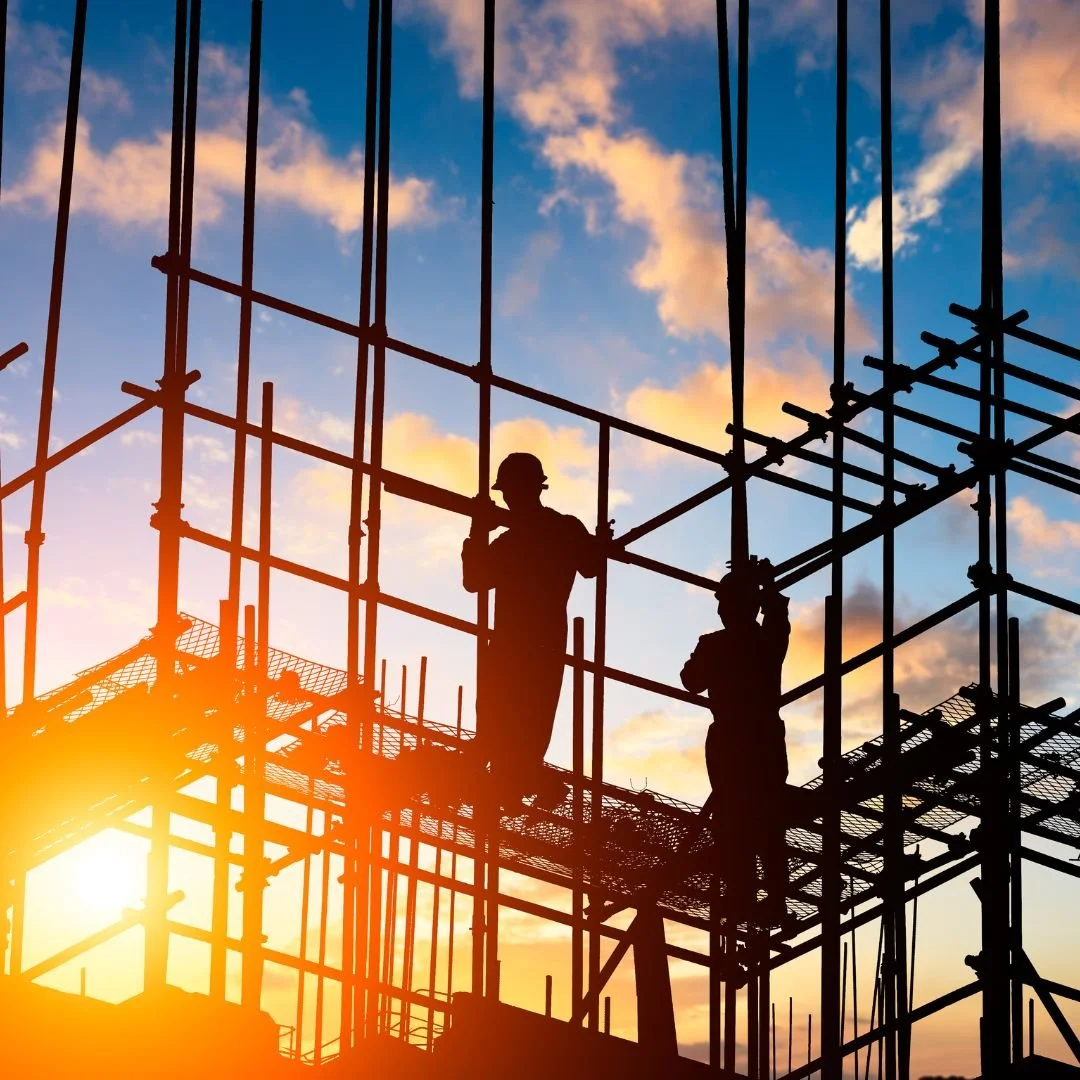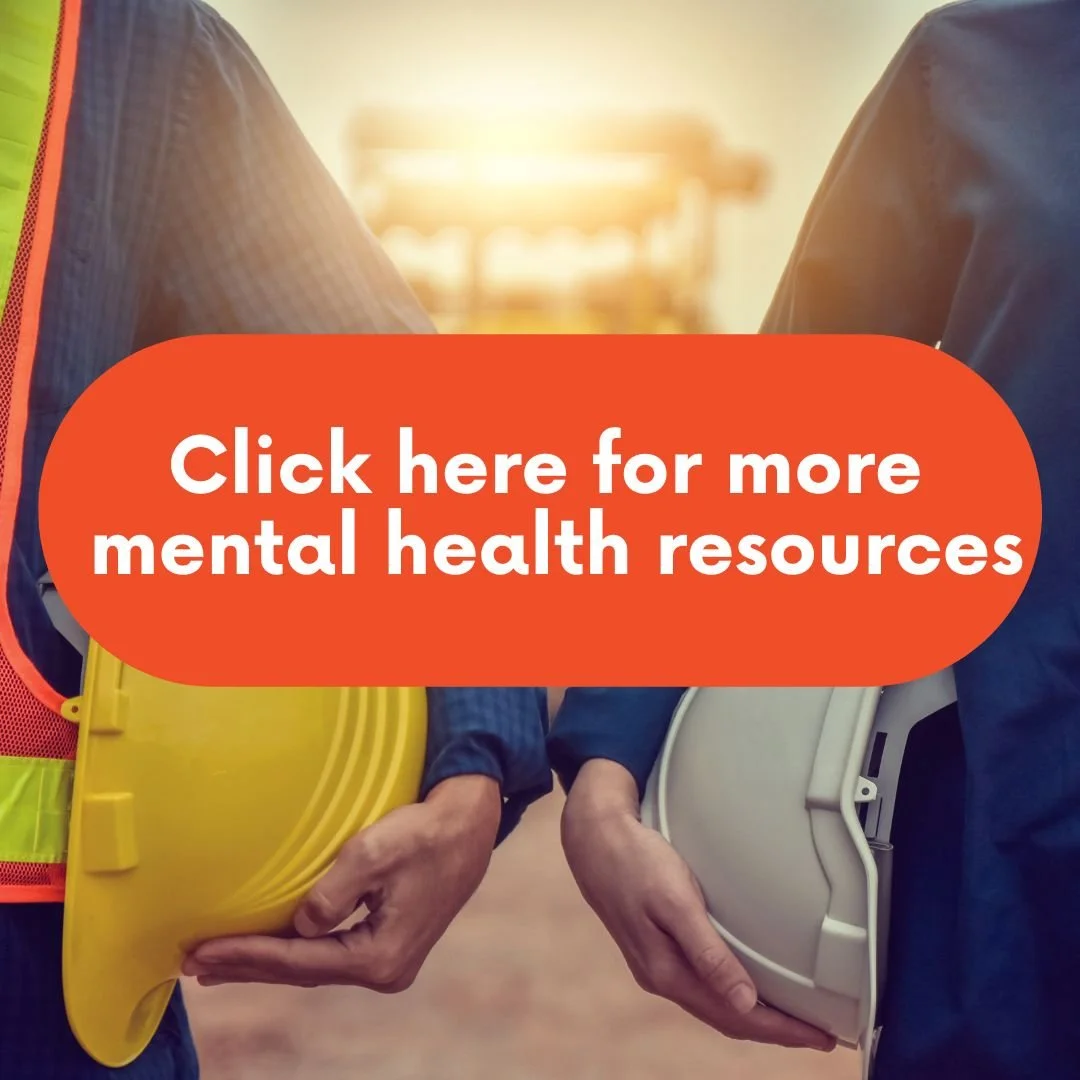Let’s talk about Mental Health in the Construction Industry
TRIGGER WARNING: this post discusses various aspects of mental health awareness, including suicide. Mental Health resources will be shared throughout and at the end of the post.
It was the week before my birthday, in the year before the world shut down when she called and told me she just drove into oncoming traffic and needed to go to the hospital. Confused, I thought she was in a car accident, but she very calmly told me she tried to end her life but realized it would hurt too many people in the process, including me, and she swerved back into the correct lane of traffic, pulled over and called me to tell me she was ready to check into a mental health facility.
After two stays, she was diagnosed as bipolar and given a treatment plan that included medication and therapy and other adjustments to how she lived her life to ensure she would continue to live her life.
My life changed forever on that day, and the days the followed, and every day that she wakes up is a gift I’m grateful for.
I share our story not so anyone feels sorry for me or for her. But because people don’t share these stories enough. They fear judgement. But not her. She is an impassioned advocate for mental health awareness, and she challenges people to ask questions and learn and support those with conditions like hers.
Because she is so strong and fearless, I can be, too. Even as I sat down at my computer to write this blog, I questioned whether I should share my own personal experiences on this platform. But I decided the topic was too important, and I wanted to ensure that other people facing these issues who don’t yet have her strength or the support of loved ones know that they are not alone.
May is Mental Health Awareness Month.
It was established by Congress in 1949 because so many World War II Veterans struggled with mental illness after coming home. Yet it still feels like we just started openly discussing mental health in the last several years, largely due to the sharp increase in depression and anxiety related to COVID lockdown and isolation. “The concept of quarantine was the only solution the human race had, but it was one of the worst punishments.”
Today, there is roughly one suicide every 11 minutes in the United States, or 129 a day.
Conversations are flowing more freely about mental health and self-care, resources are more readily available, as are mental health professionals. But still, our industry specifically is facing staggering numbers of suicides and other mental health issues compared to other non-military occupations.
The Construction Industry has the second highest suicide rate.
The conversation in the construction industry is long overdue. Construction has the second highest suicide rate among non-military jobs according to data gathered by the Centers for Disease Control. Roughly 53 construction workers out of 100,000 die by suicide annually, compared to 13 people out of 100,000 overall. Experts from the Center for Workplace Mental Health list the following contributing factors:
Construction is a male dominated industry, where strength is valued and admitting to, or seeking help for, mental health issues may be seen as weakness.
As in most industries, and with society in general, mental health stigma is pervasive, and help isn’t sought for fear of retribution, shame, and judgment.
Construction field work is hard on the body and can result in chronic pain, which can also lead to depression.
It can also be very dangerous work, despite the best safety measures, and risk of injury or death is always present.
Our industry experiences frequent market instability that contributes to financial stress, and the jobs themselves are stressful with critical deadlines, budgets, safety issues and manpower shortages.
Employees typically work long hours, and jobs can take them away from the support of family for extended periods of time.
In a discussion about suicide in the construction industry, Bob Swanson, a suicide prevention advocate for the National Alliance of Mental Illness (NAMI), suicide loss survivor, and retired contracting company president, routinely speaks out about mental health in the construction industry.
“Men in construction have the ‘tough guy’ job site mentality that they don’t need any help from anyone. That has to change. If we see someone with problems on the job, we should reach out to them and ask if they need help. That has to come not just from the employers, but from their fellow workers, as well.”
When faced with mental health challenges, many won’t seek care.
I know how lucky I am that she trusted me enough to tell me when she needed help. I know that’s rare. I think the younger generations are more comfortable sharing their feelings, good or bad, because they’ve been raised to share everything they’re thinking with the world through social media. We also have an extremely close relationship, and despite all she was hiding from me, she knew she couldn’t hide that if she wanted to live.
But many people aren’t comfortable opening up about their mental health struggles. Research suggests there are four main reasons that employees working in construction may not seek the help they need.
Leadership needs to set the standard.
From an organizational standpoint, leadership must communicate clearly and unequivocally the company’s commitment to supporting those experiencing mental health issues, and leaders must create strategies and implement policies that support that commitment, and then actually execute on those strategies.
A culture that breeds a feeling of shame and stigma, fear of judgment, and fear of negative job consequences are all factors leadership can control. A deep dive into your team’s culture seems daunting, but organizations like the Construction Industry Alliance for Suicide Prevention have mapped out ways to start, including their Stand- Up Toolbox Talks. The Center for Workplace Mental Health has also compiled a list of questions for your leadership team to help identify growth opportunities in your organization’s culture related to mental health awareness and support.
Make resources available.
The Center for Construction Research and Training has compiled a helpful list of resources for construction professionals that can be found here. Also, the recently introduced 988 Suicide & Crisis Lifeline provides free and confidential emotional support to people in suicidal crisis or emotional distress 24 hours a day, 7 days a week in the United States. Make sure everyone in your organization has access to this hotline.
Educate yourself and your team about the signs.
Even with education and awareness, access to resources, and creating a culture of acceptance, many will still struggle to share. Here are some signs shared by Trimble Construction that could indicate mental health issues exist on your job site:
A worker who is ordinarily hard-working becomes noticeably less productive.
Conflicts arise more frequently between coworkers.
Safety issues happen more frequently.
A worker may struggle with problem-solving, tardiness, or absenteeism.
“Whether you’re a safety manager, developer, or a cement mixer — no matter what your job is — it is everyone’s responsibility on-site to keep each other safe. Not just from external threats, but internal ones, too.”
The Construction Industry is working hard to change.
One constant throughout our industry is that we work hard to solve problems. Employees in the construction industry are challenged on a daily basis to innovate. Faced with a global pandemic that caused supply chain failures and further exacerbated a skilled talent shortage, construction teams rallied and persevered.
Construction professionals are working to transform our industry from a leader in worker suicide to a leader in promoting mental health awareness, providing access to resources, and building supportive cultures. Great strides have been made, as evidenced by the constant flow of information being shared, the increased coverage the topic has received at trade conferences and in-house training sessions, and the creation of the Construction Industry Alliance for Suicide Prevention.
Tell your own stories.
As much work as the industry is doing to reduce suicides and improve the mental health of its employees, the biggest impediment to people seeking help is still the stigma attached to the topic.
When I was in high school, we didn’t talk about mental health. But when I was a much older woman, a friend from back in the day told me she had struggled with suicidal thoughts. She went so far as to make a plan. I had no idea. She was beautiful and funny and smart and popular. She was adored. She was also very, very depressed. I popped in on her one day just to chat. I have no idea what we talked about. But she would tell me years and years later that I saved her life that day. That was the day she planned to end her life. And while I certainly didn’t save her life just by coming up to talk, I interrupted her plan, and it gave her another day to think about it. She decided against it, and she’s gone on to live a happy life, surrounded by people she loves who love and accept her.
So, let’s all talk openly about mental health. Tell your stories.
Even if you’re afraid of judgement.
You never know whose life you may save.









